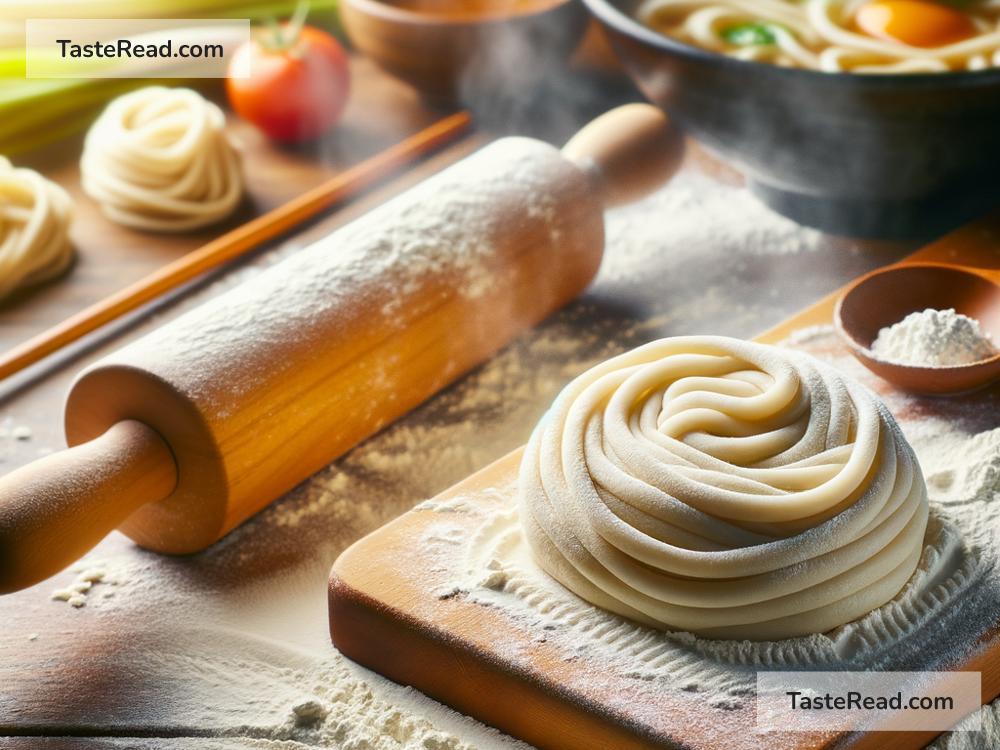How to Make Authentic Japanese Udon Noodles: A Simple Guide
Japanese cuisine is celebrated worldwide for its delicate flavors, unique textures, and traditional cooking methods. Among the myriad of dishes that Japan has introduced to the global palate, udon noodles stand out for their simplicity and comfort. Udon is a type of thick, wheat-flour noodle, often served in a mildly flavored broth with various toppings. Making authentic Japanese udon noodles at home might sound daunting, but it’s quite manageable and definitely worth the effort. Let’s break down the process into simple steps so you can bring a taste of Japan to your kitchen.
Ingredients:
Before we dive into the process, let’s look at the ingredients you’ll need. The beauty of udon lies in its simplicity, requiring only a handful of basic ingredients.
- For the Noodles:
- 2 cups of all-purpose flour (plus extra for dusting)
- ½ cup of water
-
½ teaspoon of salt
-
For the Broth (Kakejiru):
- 4 cups of dashi broth (Japanese soup stock that can be made using bonito flakes, kelp, or a combination of both)
- 2 tablespoons soy sauce
- 2 tablespoons mirin (sweet rice wine)
- 1 teaspoon sugar
Udon Dough Preparation:
-
Mix Ingredients: In a large bowl, combine the all-purpose flour and salt. Gradually add the water, mixing it in with your hands until the dough begins to come together.
-
Knead: Once you have a rough ball, transfer it to a clean surface and start kneading. This might require some elbow grease. The goal is to achieve a smooth, elastic dough, which usually takes about 10 minutes of kneading.
-
Rest: Wrap the dough in plastic wrap and let it rest for about an hour. This resting period allows the gluten to relax, making the dough easier to roll out.
Shaping the Udon:
-
Roll Out: Dust your surface with flour to prevent sticking. Take the rested dough and roll it out into a rectangle about 1/ 8 inch thick. Consistent thickness is key for evenly cooked noodles.
-
Fold and Cut: Lightly dust the top of the dough with more flour, then fold it over itself in three sections, like a letter. Using a sharp knife, cut the dough into strips. The width is up to you, but traditionally, udon noodles are about a quarter inch wide.
-
Cook Immediately or Dry: You can cook the noodles right away or hang them to dry for future use. Dried udon will need a longer cooking time.
Preparing the Broth:
-
Combine Ingredients: In a pot, combine the dashi broth, soy sauce, mirin, and sugar. Bring the mixture to a simmer over medium heat, stirring until the sugar dissolves completely.
-
Adjust: Taste the broth and adjust the seasonings as needed. The flavor should be a harmonious blend of savory with a slight sweetness.
Cooking and Serving:
-
Cook the Noodles: Bring a large pot of water to a boil. Add the noodles, stirring occasionally to prevent sticking. Fresh noodles take about 3-4 minutes to cook, while dried ones might take 8-10 minutes. They should be tender but still have a slight chewiness.
-
Rinse and Serve: Once cooked, drain the noodles and rinse them under cold water to stop the cooking process and remove extra starch. This step ensures your noodles remain springy and not overly sticky.
-
Assemble: Place the noodles in a bowl and pour the hot broth over them. Now, it’s time to personalize your udon. Common toppings include thinly sliced green onions, a soft-boiled egg, tempura, or slices of kamaboko (fish cake).
Final Thoughts:
Making authentic Japanese udon noodles at home is a rewarding experience that allows you to customize your bowl to your liking. The process, from kneading the dough to savoring a warm, comforting bowl of udon, is a meditative practice reflecting the Japanese dedication to craftsmanship and quality. Whether it’s a cold winter’s night or a rainy day needing a touch of warmth, a bowl of homemade udon promises comfort like few other dishes can. Gather your ingredients, embrace the process, and prepare yourself for a delicious dive into Japanese culinary tradition.


